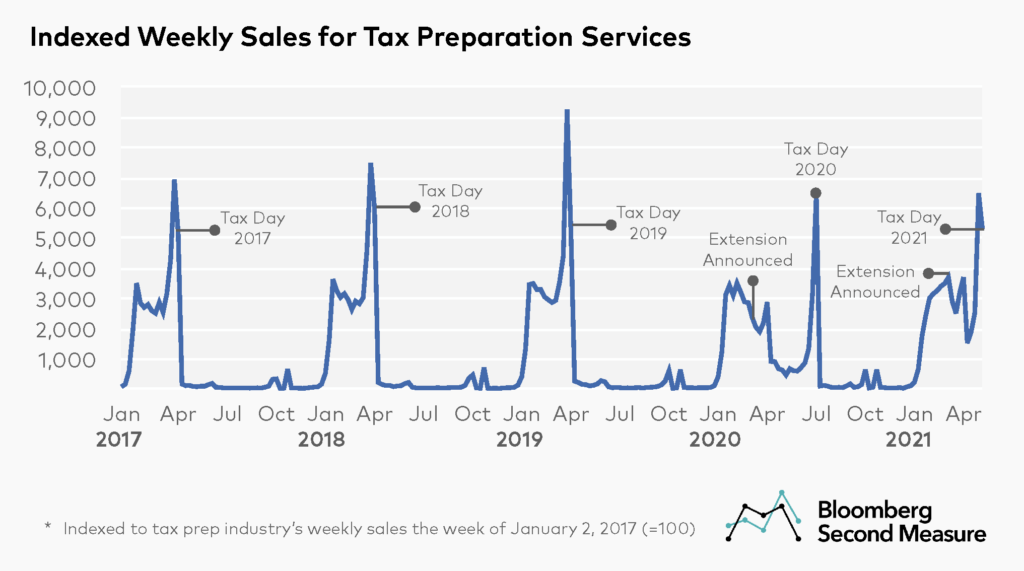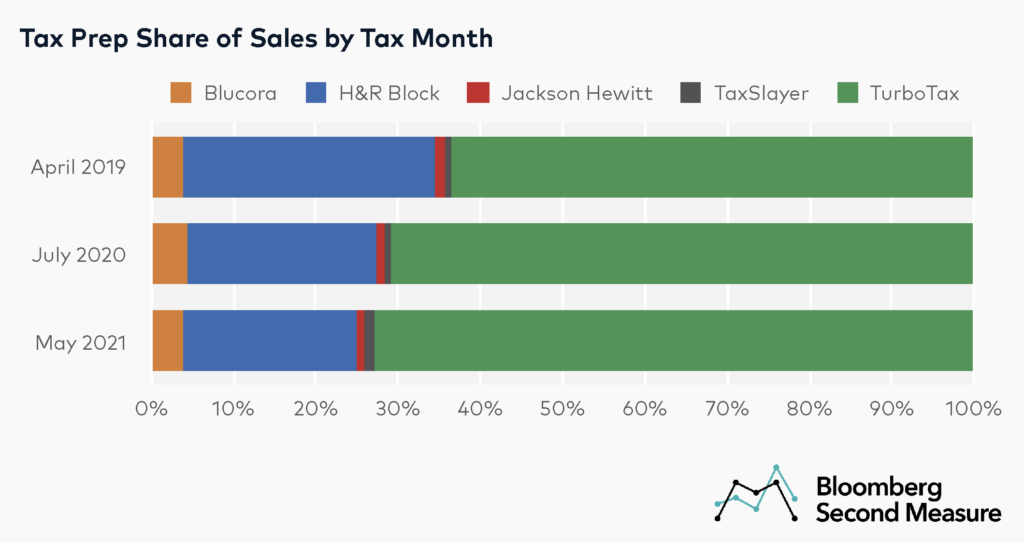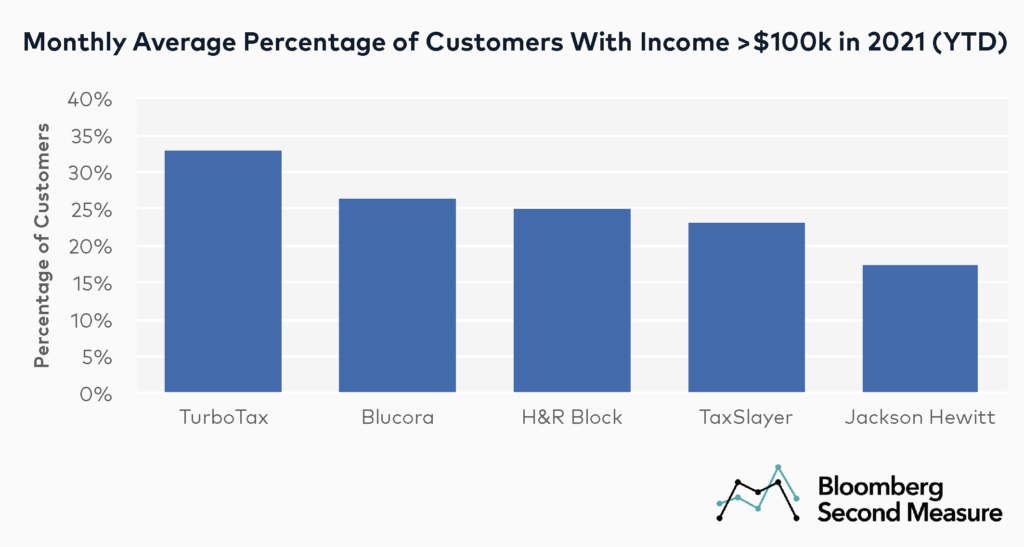NOTE: Bloomberg Second Measure launched a new and exclusive transaction dataset in July 2022. Our data continues to be broadly representative of U.S. consumers. As a result of this panel change, however, we recommend using only the latest posts in assessing metrics, and do not support referring to historical blog posts to infer period-over-period comparisons.
Due to the COVID-19 pandemic, the federal income tax deadline for individuals was extended for the past two years, to July 15 in 2020 and May 17 in 2021. Consumer transaction data reveals that, consequently, sales for the tax prep industry were more spread out in 2020 and 2021 compared to previous years, resulting in smaller-than-usual sales spikes the week of and week before Tax Day. However, TurboTax continues to lead the tax prep industry and has steadily gained market share from its competitors over the past three tax seasons.
In 2020 and 2021, fewer tax prep sales occurred the week of and before Tax Day
In 2017, 2018, and 2019, roughly 26 percent of annual sales for tax preparation services occurred during the week of or week before Tax Day, which usually takes place around April 15. Historical data also shows that after Tax Day passes, sales for tax preparation services drop significantly, with the exception of another small spike in the fall that coincides with the tax extension deadline of October 15.

For the first few months of 2020, the tax prep industry’s sales volume followed roughly the same pattern as previous years. However, on March 21, 2020 the IRS announced that the tax deadline would be extended to mid-July in response to the pandemic. After the announcement, tax prep sales were spread out over the weeks approaching the new July deadline. As a result, only 17 percent of annual sales for tax prep services occurred the week of and week before Tax Day 2020.
A similar pattern occurred in 2021, with sales being generally more spread out between the IRS’ March 17 announcement of the extended tax deadline and the deadline itself on May 17. In 2021, 21 percent of sales year-to-date (as of the week of May 17) occurred the week of Tax Day and the week before.
TurboTax has the highest share of sales
A closer look at the top industry competitors within our dataset shows that over the past three tax seasons, TurboTax has increased its share of sales. In May 2021, TurboTax’s share of sales was 73 percent, 3 percentage points higher than in July 2020 and 10 percentage points higher than in April 2019.

H&R Block is the second-most popular tax prep service, but has experienced a decreasing share of sales over the past three tax seasons. In May 2021, H&R Block’s share of sales was 21 percent, compared to 23 percent in July 2020 and 31 percent in April 2019.
On the other hand, the share of sales for smaller competitors Blucora (which owns TaxAct), TaxSlayer, and Jackson Hewitt have remained roughly the same over the past three tax seasons at 4 percent, 1 percent, and 1 percent, respectively. In terms of tax prep offerings, all of these companies have an online filing option, with or without help from a tax professional. Only H&R Block and Jackson Hewitt also have retail locations.
TurboTax also has the most affluent customers
TurboTax has the highest percentage of customers with incomes over $100,000, with a monthly average of 33 percent year-to-date as of May 2021. Jackson Hewitt has the lowest percentage of customers making over $100,000, with a monthly average of 17 percent. For Blucora, H&R Block, and TaxSlayer, the monthly average of customers with incomes over $100,000 were 26 percent, 25 percent, and 23 percent respectively.

Each tax service’s fee structure may affect observed customer income. For example, these income figures do not include consumers who have simpler tax returns and are therefore eligible to file their taxes for free. Some of these services, including TurboTax and H&R Block, also charge more if the consumer has to file taxes on long or short term capital gains, which may skew observed customer income toward higher-earning individuals.
*Note: Bloomberg Second Measure regularly refreshes its panel and methods in order to provide the highest quality data that is broadly representative of U.S. consumers. As a result, we may restate historical data, including our blog content. We recommend using only the latest post in assessing metrics.
